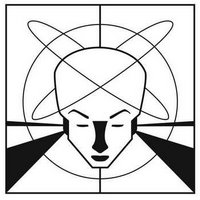Near Death Experiences
A near-death experience (NDE) is an experience reported by a person who nearly died, or who experienced clinical death and then revived. Some people believe it can be explained by hallucinations produced by the brain as it dies, while others believe that such an explanation cannot account for all the evidence. The experience has become more common in recent times, especially since the development of cardiac resuscitation techniques. Popular interest in near-death experiences was sparked by Raymond Moody Jr's 1975 book Life after Life and the founding of the International Association for Near-death Studies (IANDS) in 1978. According to a Gallup poll approximately eight million Americans claim to have had a near-death experience. NDEs are among the phenomena studied in the field of parapsychology.
Near-death experience characteristics
The phenomenology of an NDE usually includes physiological, psychological and transcendental aspects. Typically the experience follows a distinct progression
A sense of being dead.
An out-of-body experience. A sensation of floating above one's body and seeing the surrounding area.
Pleasant feelings, calmness. A sense of overwhelming love and peace.
A sensation of moving upwards through a tunnel or narrow passageway.
Meeting deceased relatives or spiritual figures.
Encountering a being of light, or a light (possibly a religious or divine figure).
Being given a life review.
Reaching a border or boundary.
A feeling of being returned to the body, often accompanied by a reluctance.
Some people have also experienced extremely distressing NDEs. A 'core' near-death experience reflects — as intensity increases according to the Rasch scale — peace, joy and harmony, followed by insight and mystical or religious experiences. The most intense NDEs involve an awareness of things occurring in a different place or time, and some of these observations are said to have been evidential.
Among the clinical circumstances that are thought to lead to an NDE we find such factors as: cardiac arrest, shock in postpartum loss of blood or in perioperative complications, septic or anaphylactic shock, electrocution, coma, intracerebral haemorrhage or cerebral infarction, attempted suicide, near-drowning or asphyxia, apnoea, and serious depression.
A near-death experience (NDE) is an experience reported by a person who nearly died, or who experienced clinical death and then revived. Some people believe it can be explained by hallucinations produced by the brain as it dies, while others believe that such an explanation cannot account for all the evidence. The experience has become more common in recent times, especially since the development of cardiac resuscitation techniques. Popular interest in near-death experiences was sparked by Raymond Moody Jr's 1975 book Life after Life and the founding of the International Association for Near-death Studies (IANDS) in 1978. According to a Gallup poll approximately eight million Americans claim to have had a near-death experience. NDEs are among the phenomena studied in the field of parapsychology.
Near-death experience characteristics
The phenomenology of an NDE usually includes physiological, psychological and transcendental aspects. Typically the experience follows a distinct progression
A sense of being dead.
An out-of-body experience. A sensation of floating above one's body and seeing the surrounding area.
Pleasant feelings, calmness. A sense of overwhelming love and peace.
A sensation of moving upwards through a tunnel or narrow passageway.
Meeting deceased relatives or spiritual figures.
Encountering a being of light, or a light (possibly a religious or divine figure).
Being given a life review.
Reaching a border or boundary.
A feeling of being returned to the body, often accompanied by a reluctance.
Some people have also experienced extremely distressing NDEs. A 'core' near-death experience reflects — as intensity increases according to the Rasch scale — peace, joy and harmony, followed by insight and mystical or religious experiences. The most intense NDEs involve an awareness of things occurring in a different place or time, and some of these observations are said to have been evidential.
Among the clinical circumstances that are thought to lead to an NDE we find such factors as: cardiac arrest, shock in postpartum loss of blood or in perioperative complications, septic or anaphylactic shock, electrocution, coma, intracerebral haemorrhage or cerebral infarction, attempted suicide, near-drowning or asphyxia, apnoea, and serious depression.

0 Comments:
Post a Comment
Psychologist